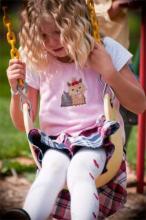
Proprioception is an automatic sensitivity mechanism in the body that sends messages through the central nervous system relaying information to the body about how to react to stimuli and with what amount of tension. The muscles, joints, and connective tissues contain specialized sensory receptors that enable the body to process the information and turn that information into action. The skin, palms of the hands, soles of the feet, and other senses coordinate together to communicate with the brain about muscle tension, weight shifts, load, and range of motion.1
Walking requires the brain to recruit and direct many different parts of the leg to contact the ground, transfer energy from the heel back through the hip, and push and pull the body forward while maintaining balance. The brain assesses how the body is positioned and properly processes the information in order to propel the body into the next position. The brain gets this information from the muscles as well as from the eyes and ears.2
Balance is achieved by a complex set of sensorimotor control systems. They include sensory input from proprioception, vision, and the vestibular system, which involves the inner ear that aids in equilibrium and spatial orientation.3 The vestibular and visual systems are inseparably linked as neurological and functional connections. Together, vestibular coordination and visual perception provide the foundation for skillful movement through space.4
Learning new motor skills involves training the proprioceptive system, especially if the skill involves moving the arms and legs in a precise way without looking at them, such as in throwing a ball or riding a bicycle.5 Generally, this is accomplished unconsciously, however, the central nervous system and the sensory receptors can be conditioned to be more responsive through conscious awareness and cognitive processing of the body’s position in space.6 Proprioception training is commonly used in the rehabilitation of injuries, but it is also used to prevent injury by improving balance, coordination, agility, and quickness. Standing on wobble boards and sitting on exercise balls challenge proprioception and aid the body in learning to reposition the body to maintain balance.7
Properly functioning proprioception allows a child to sit on a chair without falling, close a door with the right amount of effort, and navigate around other children in a crowded hallway. If a child experiences disturbances to his proprioceptive system, he may appear clumsy and may not be able to navigate playground equipment efficiently or catch a ball while playing a game.8 Swinging has been shown to benefit a child’s proprioceptive system as he moves through space and makes subtle adjustments to posture while swinging.9 Innovative new playgrounds have been designed to incorporate movement that aids balance and coordination. Moving walkways, spring boards, balance boards, and wobble boards all require the proprioceptive system to communicate with the body to adjust quickly to the movement.
- 1. Nottingham, Suzanne. “Training for Proprioception & Function.” CoachR.org. < http://www.coachr.org/proprio.htm > 29 Sep. 2010.
- 2. “What is Proprioception?” JumpUSA.com. < http://jumpusa.com/proprio2.htm > 29 Sep. 2010.
- 3. Haven, Lisa. “The Human Balance System – A Complex Coordination of Central and Peripheral Systems.” Vestibular Disorders Association. < http://www.vestibular.org/ > 16 Sep. 2010.
- 4. “Visual-Vestibular Coordination.” Occupational Therapy Associates. < www.otawatertown.com/pdfs/vis-vestibular.pdf > 16 Sep. 2010.
- 5. “What is Proprioception?” WiseGeek.com. < http://wisegeek.com/what-is-proprioception.htm > 29 Sep. 2010.
- 6. Op. cit., Nottingham.
- 7. Quinn, Elizabeth. “Balance Training and Proprioception.” About.com: Sports Medicine. < http://sportsmedicine.about.com/cs/conditioning/a/aa062200a.htm > 29 Sep. 2010.
- 8. “Basic Sensory Development.” Incredible Horizons.com. < http://incrediblehorizons.com/sensory-development.htm > 17 Sep. 2010.
- 9. Frost, Joe L., Pei-San Brown, John A. Sutterby, Candra D. Thornton. The Developmental Benefits of Playgrounds. Olney, MD: Association for Childhood Education International, 2004. p. 172.

